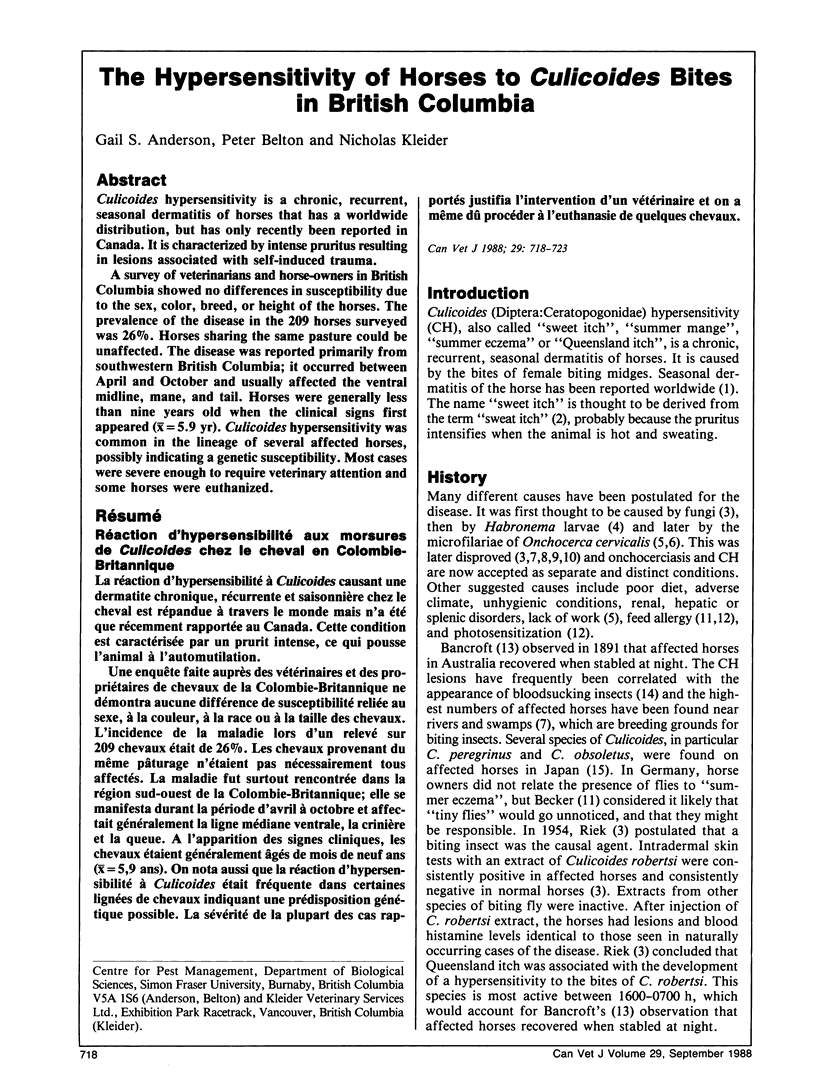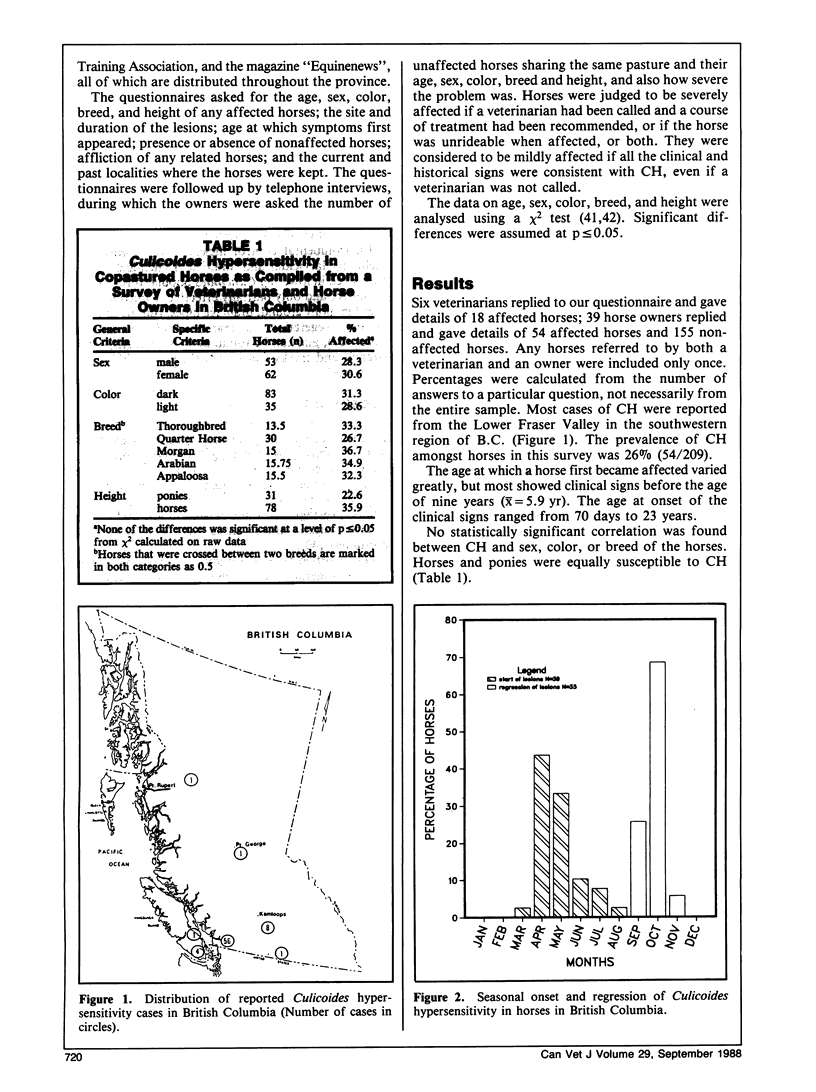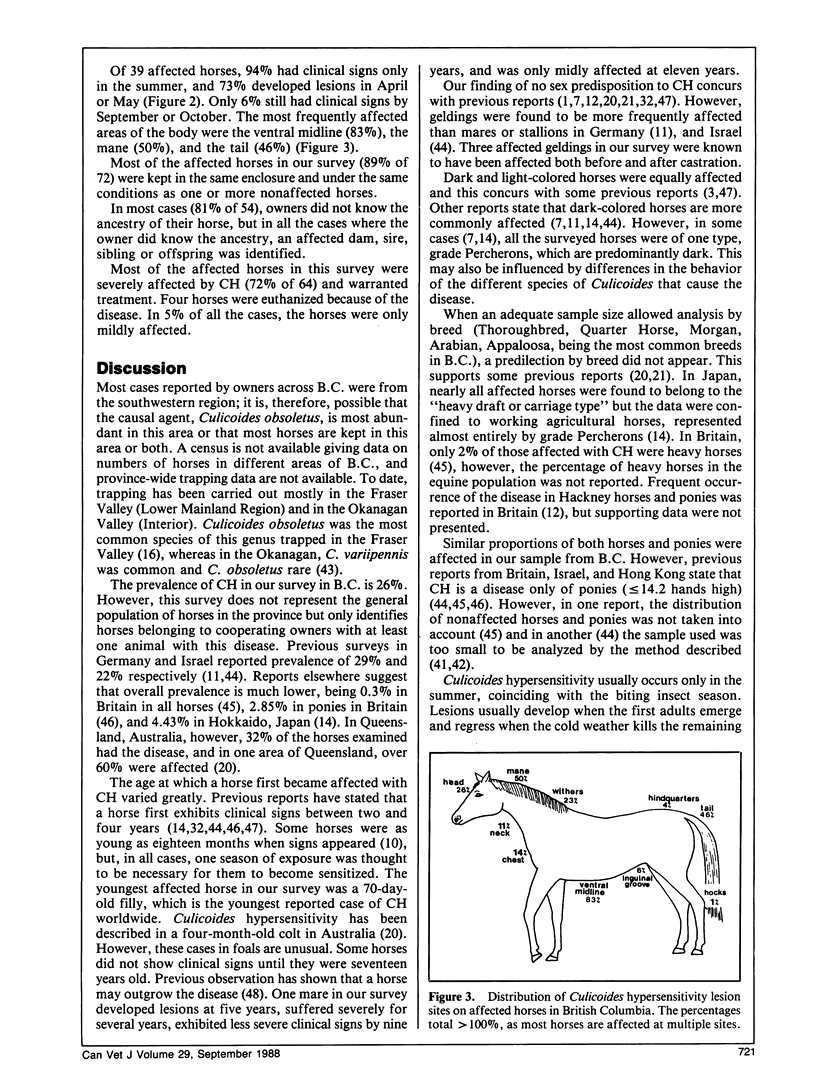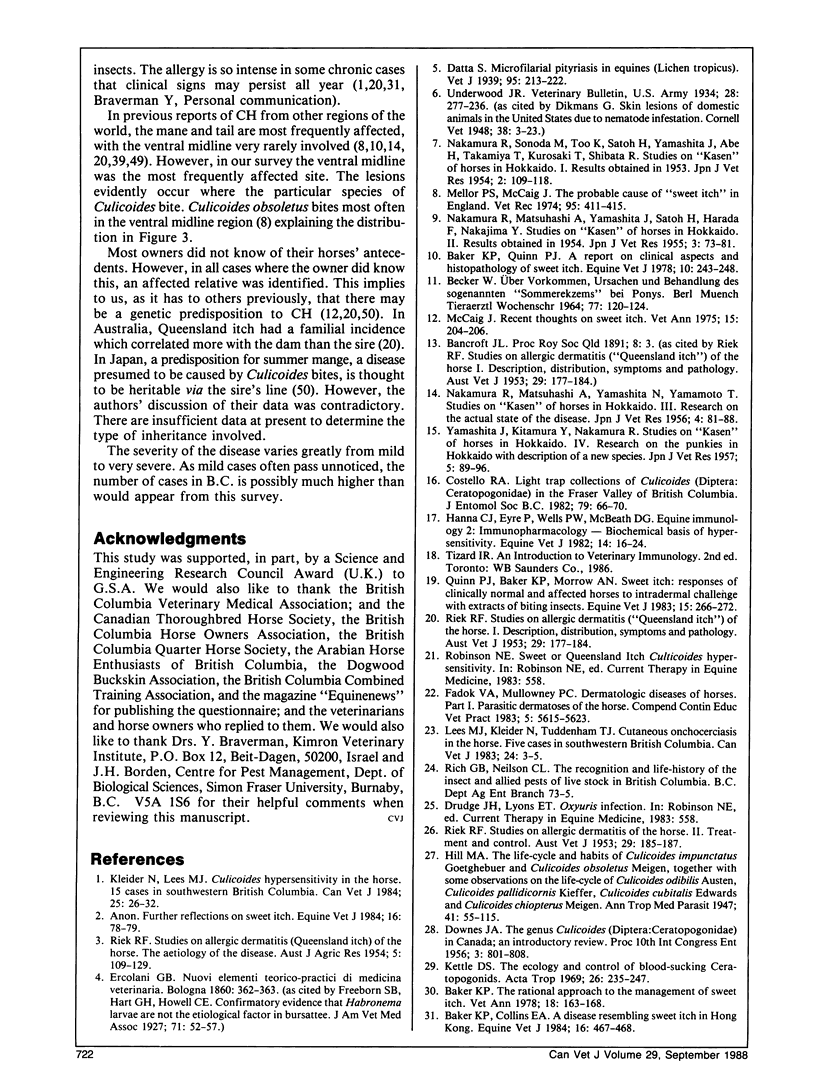Abstract
Culicoides hypersensitivity is a chronic, recurrent, seasonal dermatitis of horses that has a worldwide distribution, but has only recently been reported in Canada. It is characterized by intense pruritus resulting in lesions associated with self-induced trauma.
A survey of veterinarians and horse-owners in British Columbia showed no differences in susceptibility due to the sex, color, breed, or height of the horses. The prevalence of the disease in the 209 horses surveyed was 26%. Horses sharing the same pasture could be unaffected. The disease was reported primarily from southwestern British Columbia; it occurred between April and October and usually affected the ventral midline, mane, and tail. Horses were generally less than nine years old when the clinical signs first appeared ([unk]=5.9 yr). Culicoides hypersensitivity was common in the lineage of several affected horses, possibly indicating a genetic susceptibility. Most cases were severe enough to require veterinary attention and some horses were euthanized.
Full text
PDF





Selected References
These references are in PubMed. This may not be the complete list of references from this article.
- Baker K. P., Collins E. A. A disease resembling sweet itch in Hong Kong. Equine Vet J. 1984 Sep;16(5):467–468. doi: 10.1111/j.2042-3306.1984.tb01984.x. [DOI] [PubMed] [Google Scholar]
- Baker K. P., Quinn P. J. A report on clinical aspects and histopathology of sweet itch. Equine Vet J. 1978 Oct;10(4):243–248. doi: 10.1111/j.2042-3306.1978.tb02271.x. [DOI] [PubMed] [Google Scholar]
- Braverman Y., Ungar-Waron H., Frith K., Adler H., Danieli Y., Baker K. P., Quinn P. J. Epidemiological and immunological studies of sweet itch in horses in Israel. Vet Rec. 1983 May 28;112(22):521–524. doi: 10.1136/vr.112.22.521. [DOI] [PubMed] [Google Scholar]
- Eyre P., Hanna C. J., Wells P. W., McBeath D. G. Equine immunology 3: immunopharmacology--anti-inflammatory and antihypersensitivity drugs. Equine Vet J. 1982 Oct;14(4):277–281. doi: 10.1111/j.2042-3306.1982.tb02424.x. [DOI] [PubMed] [Google Scholar]
- Hanna C. J., Eyre P., Wells P. W., McBeath D. G. Equine immunology 2: immunopharmacology--biochemical basis of hypersensitivity. Equine Vet J. 1982 Jan;14(1):16–24. doi: 10.1111/j.2042-3306.1982.tb02328.x. [DOI] [PubMed] [Google Scholar]
- Kettle D. S. The ecology and control of blood-sucking ceratopogonids. Acta Trop. 1969;26(3):235–248. [PubMed] [Google Scholar]
- Kleider N., Lees M. J. Culicoides hypersensitivity in the horse: 15 cases in southwestern british columbia. Can Vet J. 1984 Jan;25(1):26–32. [PMC free article] [PubMed] [Google Scholar]
- Lees M. J., Kleider N., Tuddenham T. J. Cutaneous onchocerciasis in the horse: five cases in southwestern british columbia. Can Vet J. 1983 Jan;24(1):3–5. [PMC free article] [PubMed] [Google Scholar]
- Mellor P. S., McCraig J. The probable cause of "sweet itch" in England. Vet Rec. 1974 Nov 2;95(18):411–415. doi: 10.1136/vr.95.18.411. [DOI] [PubMed] [Google Scholar]
- Quinn P. J., Baker K. P., Morrow A. N. Sweet itch: responses of clinically normal and affected horses to intradermal challenge with extracts of biting insects. Equine Vet J. 1983 Jul;15(3):266–272. doi: 10.1111/j.2042-3306.1983.tb01788.x. [DOI] [PubMed] [Google Scholar]


